It poured almost every day I was in India. When it wasn’t raining, fog blanketed everything. It was, after all, the rainy season, but I wasn’t about to let the monsoon season deter me from visiting the many interesting things to see and do in Dharamshala and McLeod Ganj, India.
I had come to Dharamshala specifically to attend the Long Life Ceremony and 90th birthday celebration of the Dalai Lama, so of course, my first stop was the Thekchen Chöling Temple Complex, commonly referred to as the Dalai Lama Temple. Located in McLeod Ganj, a small village in the suburbs of Dharamshala, this temple is home to the Dalai Lama and his Namgyal Monastery. I was struck by the simplicity and small size of the monastery. I guess I shouldn’t have been surprised; after all, the Dalai Lama often remarks that he is just a simple monk and it seems fitting that his complex is equally simple.

A few minute’s walk up the main street brought me to the other must see site in McLeod Ganj, the Kalachakra Temple. From the outside, it looks quite large. A giant spinning prayer wheel occupies a room at the end of the building and murals depicting Buddha and the Kalachakra deity adorn the exterior walls. But inside it is tiny and cramped. A golden Stupa in the center points the way to a worship hall that probably couldn’t accommodate more than a dozen monks. Considering that the Kalachakra is the main teaching of the Dalai Lama, I was shocked by how small it was. Yet, I thought, wasn’t this just more evidence of his simplicity and humility?

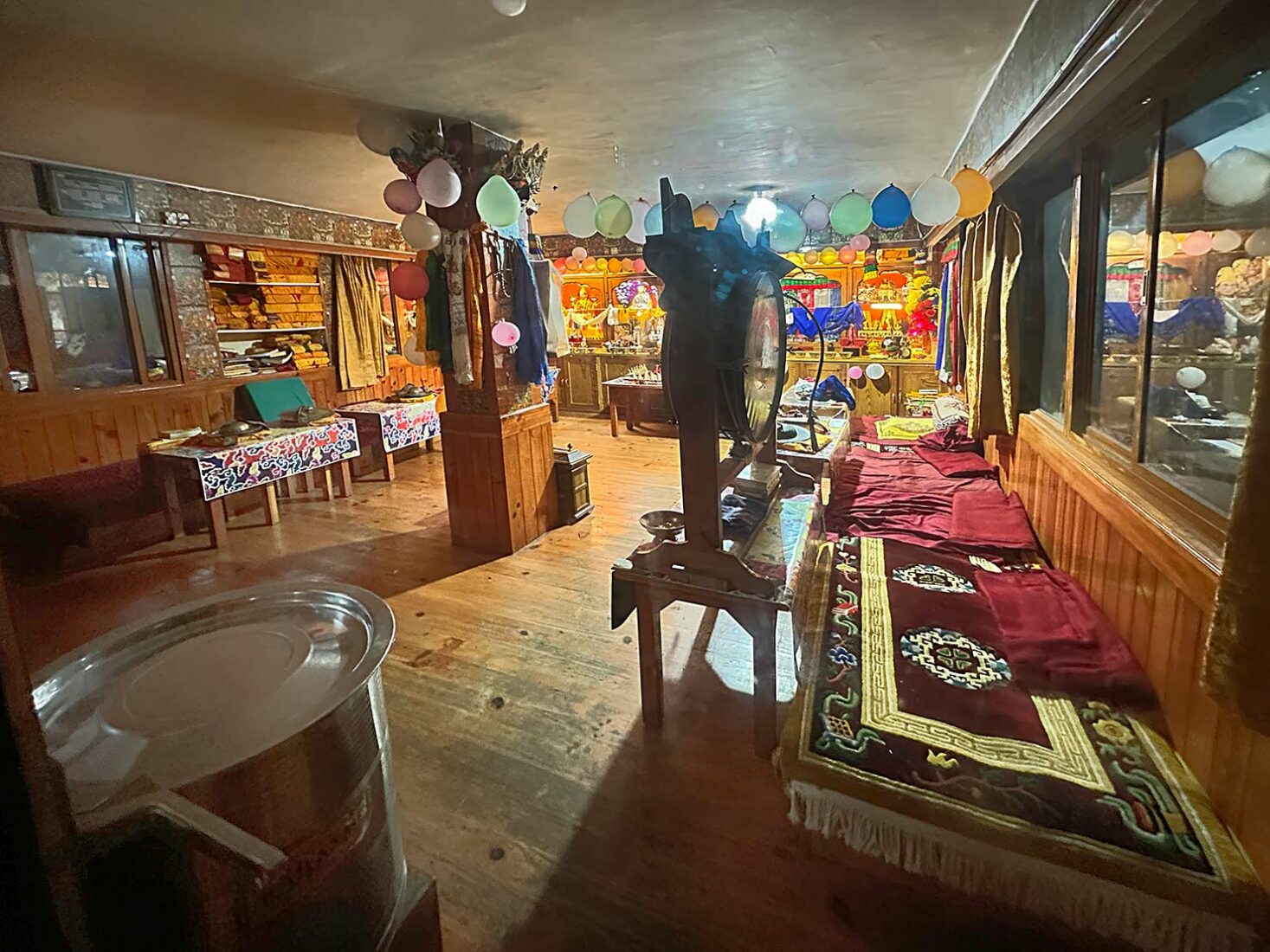
A child tugged on my shirttail as I exited the temple. She pointed to a man who I assumed to be her father. He was squatting on the ground, preparing to play a traditional Indian musical instrument. The child held out a hand. Money please. This always ties me in knots. Maybe they are truly poor and need the money to feed their family. I have so much more than they do. But over and over again I hear, do not give beggars money. And so I didn’t. Still gnashing my teeth about whether I’d done the right thing, I walked the short distance to the main square of McLeod Ganj. I stood in the center, made a 360-degree circle, then, having seen most everything that McLeod Ganj had to offer, I left. Fortunately, there was much more to see in the Dharamshala area.
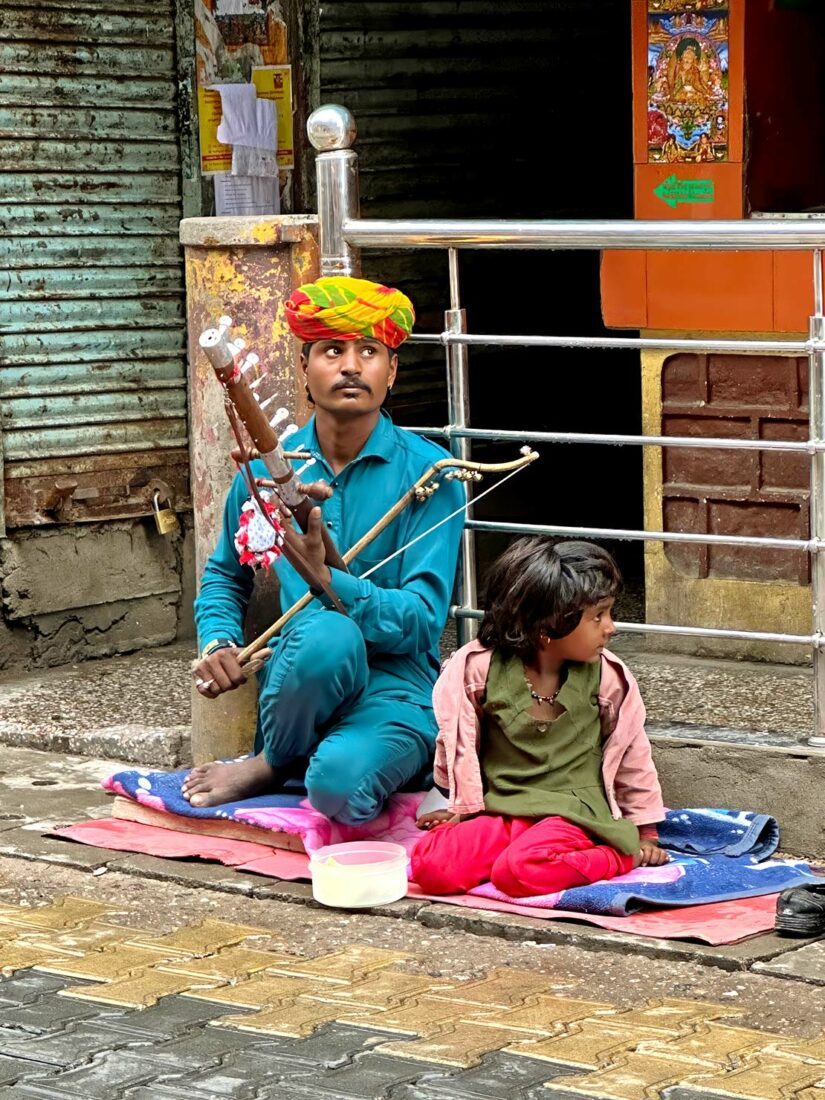
One exceptionally rainy, fog-shrouded morning, I set out early with my driver to visit a tea estate. Arjun explained that there were two possibilities: the older and more famous Dharmsala Tea Company or the Himalayan Brew Tea Garden. With rain coming down in a deluge, I decided to visit Dharmsala Tea Company on the Mann Tea Estate for an indoor tour of the processing plant, followed by a tasting of eight varieties of their world-famous Kangra tea.
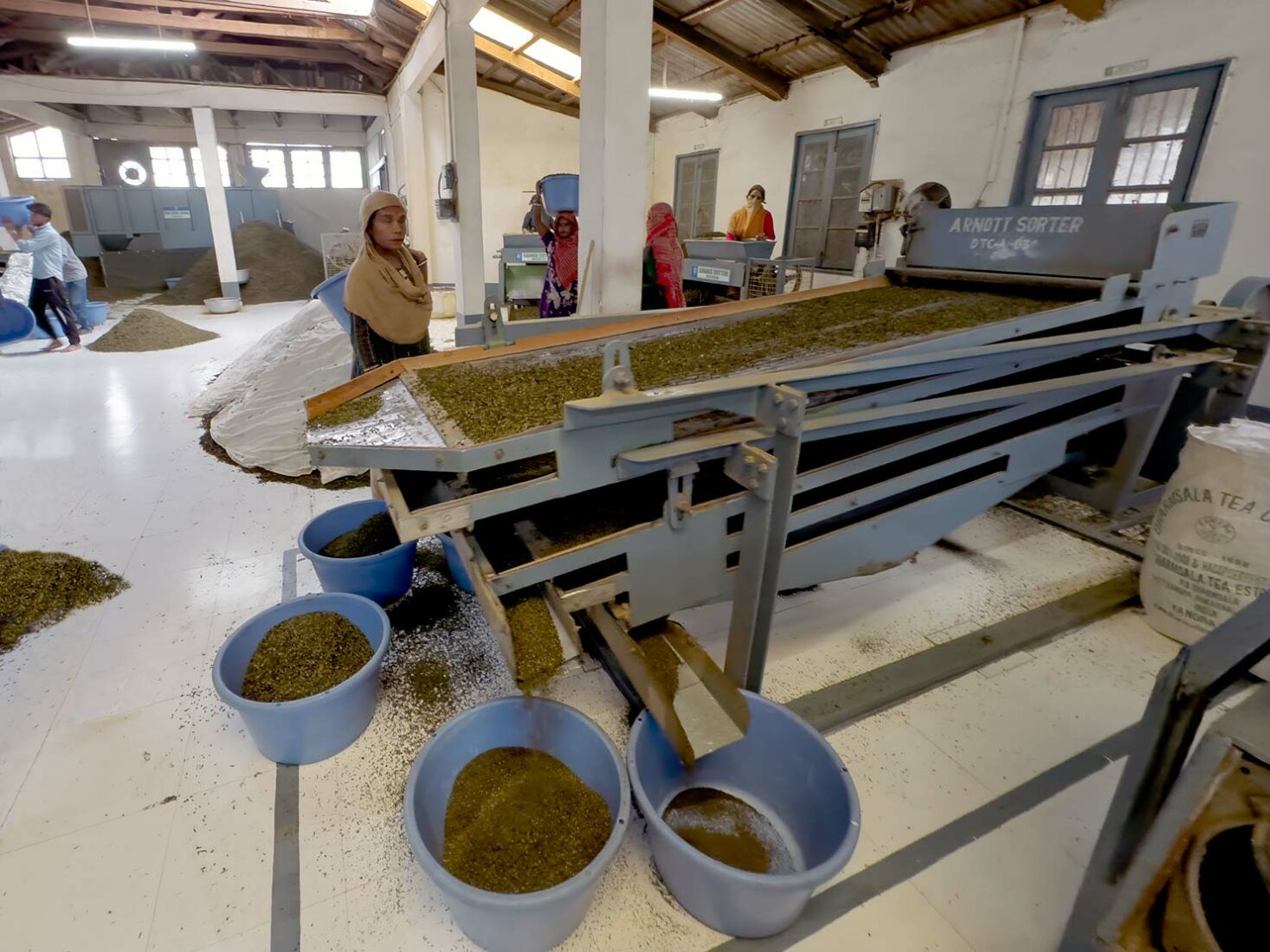
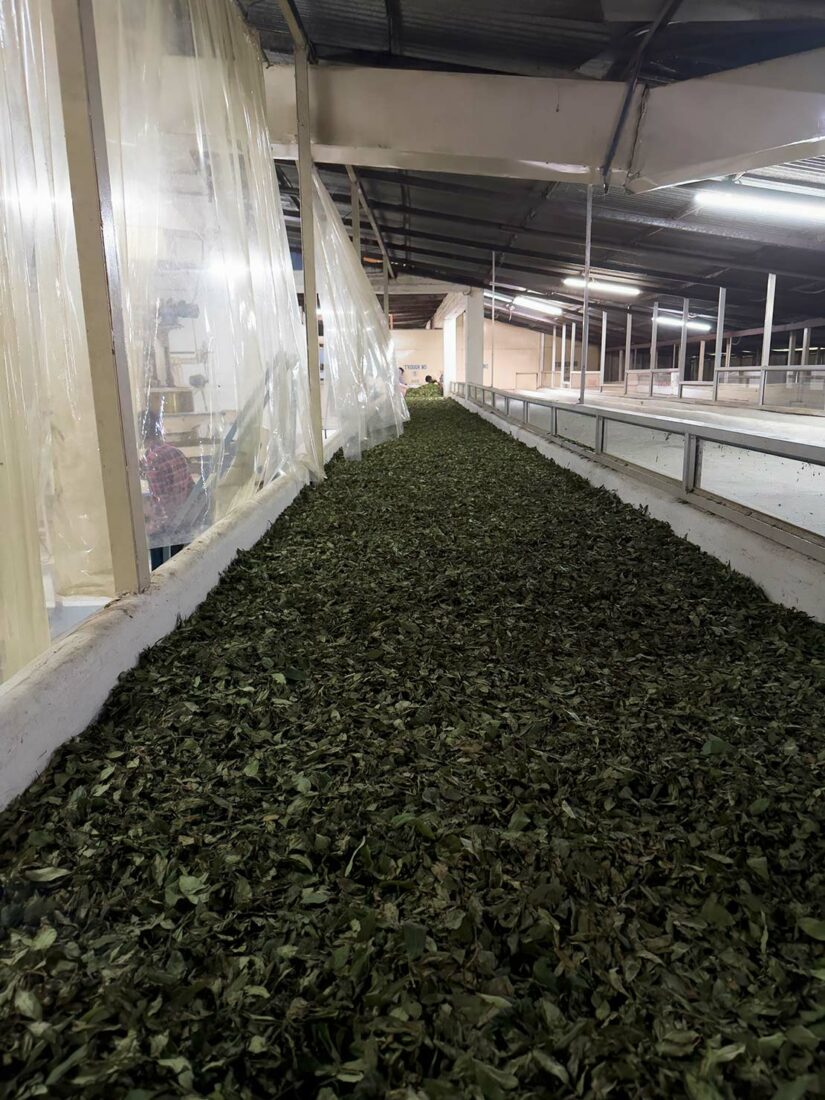

By the time I’d finished the tea tasting and purchased two tins of leaf tea (Himalayan Black Orthodox and Himalayan Hibiscus Green), the rain had slacked off. We continued down the mountain to the Himalayan Brew Tea Garden, where an open-sided wooden shack was perched on the edge of endless rolling tea fields. I settled down on a wooden bench with a pot of jasmine tea and gazed out over an ethereal expanse of green. Rain droplets quivered on the tea leaves and mist braided through the branches of the bushes. Unseen birds chirped and whistled, daring me to spot them in the dense plantings.
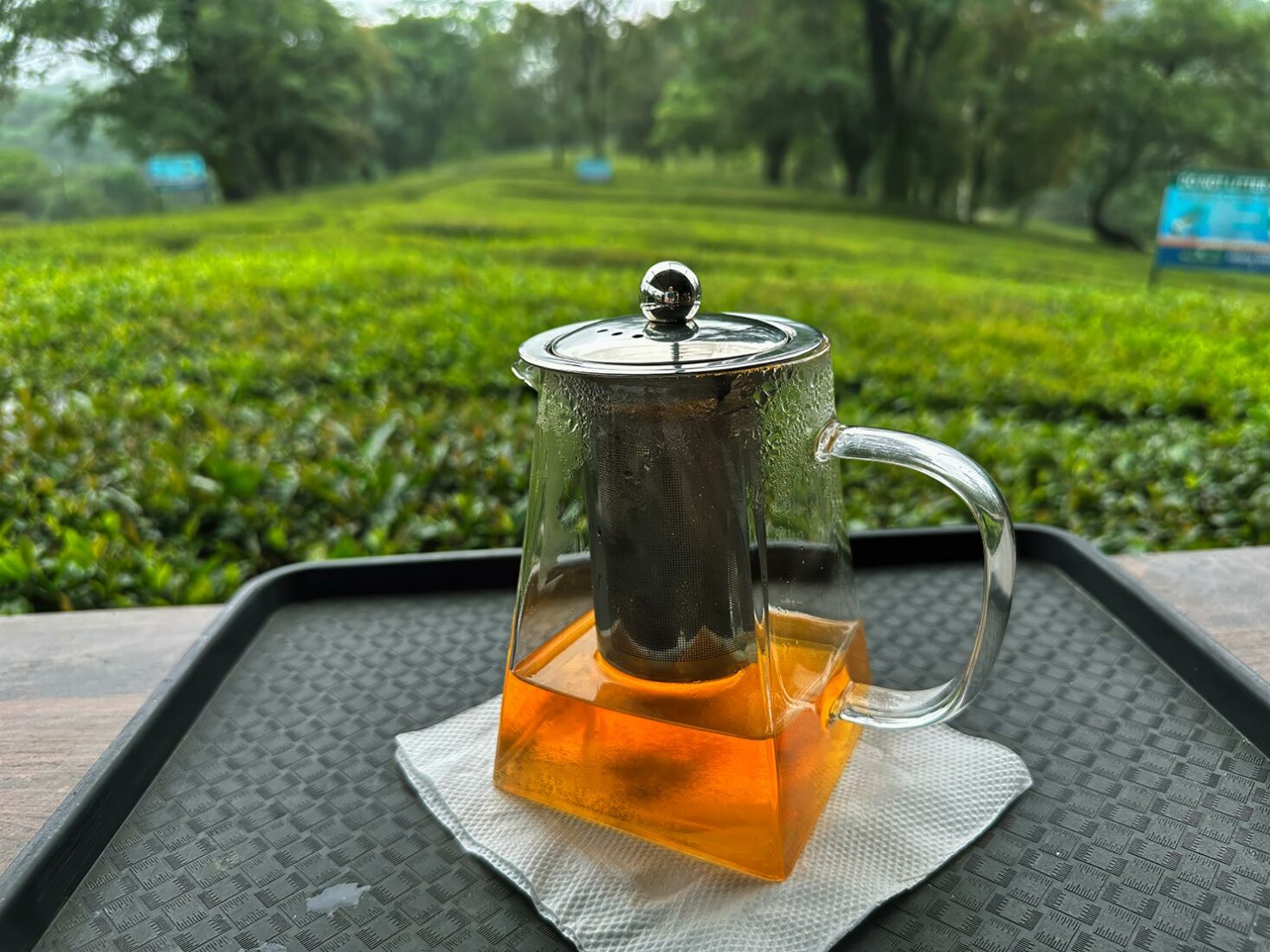
When the rain finally stopped I strolled through the rows of tea plants. I was a little hesitant because I’d read that the paths through the tea bushes can be slippery during the rainy season. But it wasn’t a problem at all. The ground was firm beneath my feet. At the top of every small hillock I expected to see the end of the plantation but it stretched as far a I could see. And almost incomprehensible to me, in a world that is ever more automated and mechanized, every leaf of every bush on every tea estate is still plucked by hand.
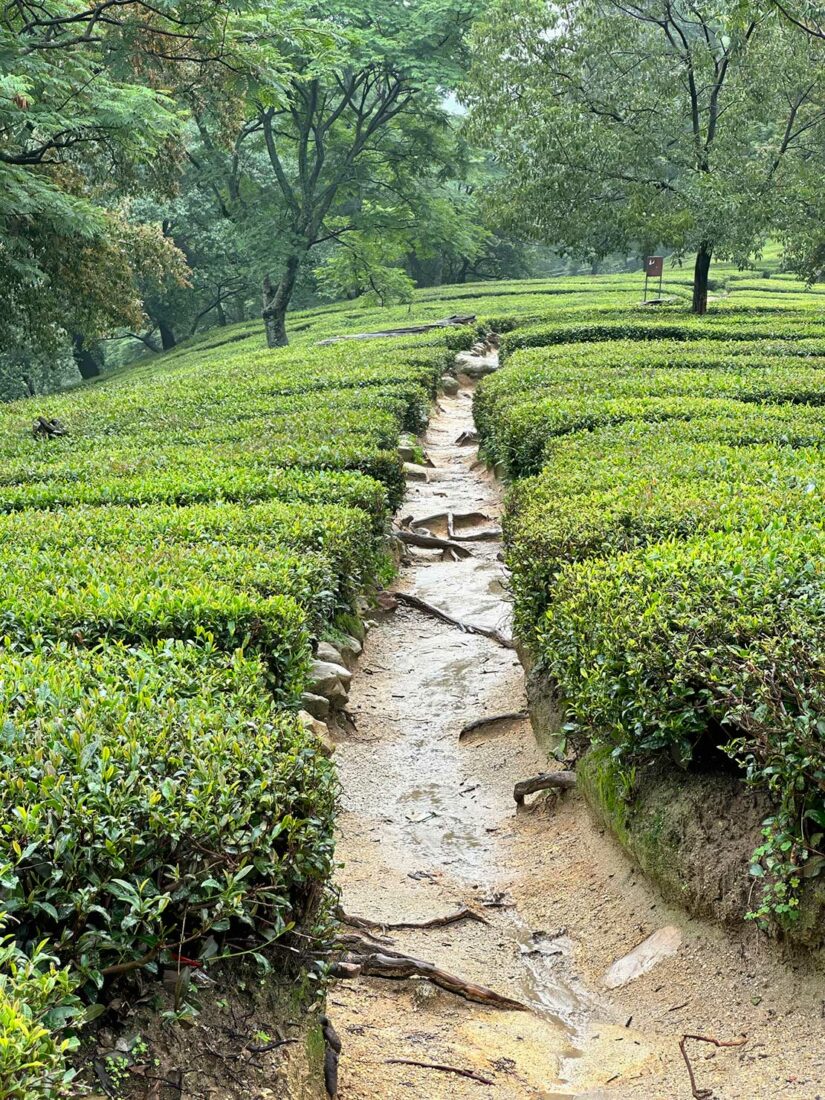
Next, Arjun stopped briefly at the State War Memorial and insisted upon driving me past the Himachal Pradesh International Cricket Stadium, the highest cricket stadium in the world.

But our real destination that afternoon was Norbulingka Institute, which was built to “retain the artistic knowledge and techniques that were achieved at the pinnacle of Tibetan Buddhist civilization, and to pass these on to new generations of artists who are interested in pursing their cultural heritage.”
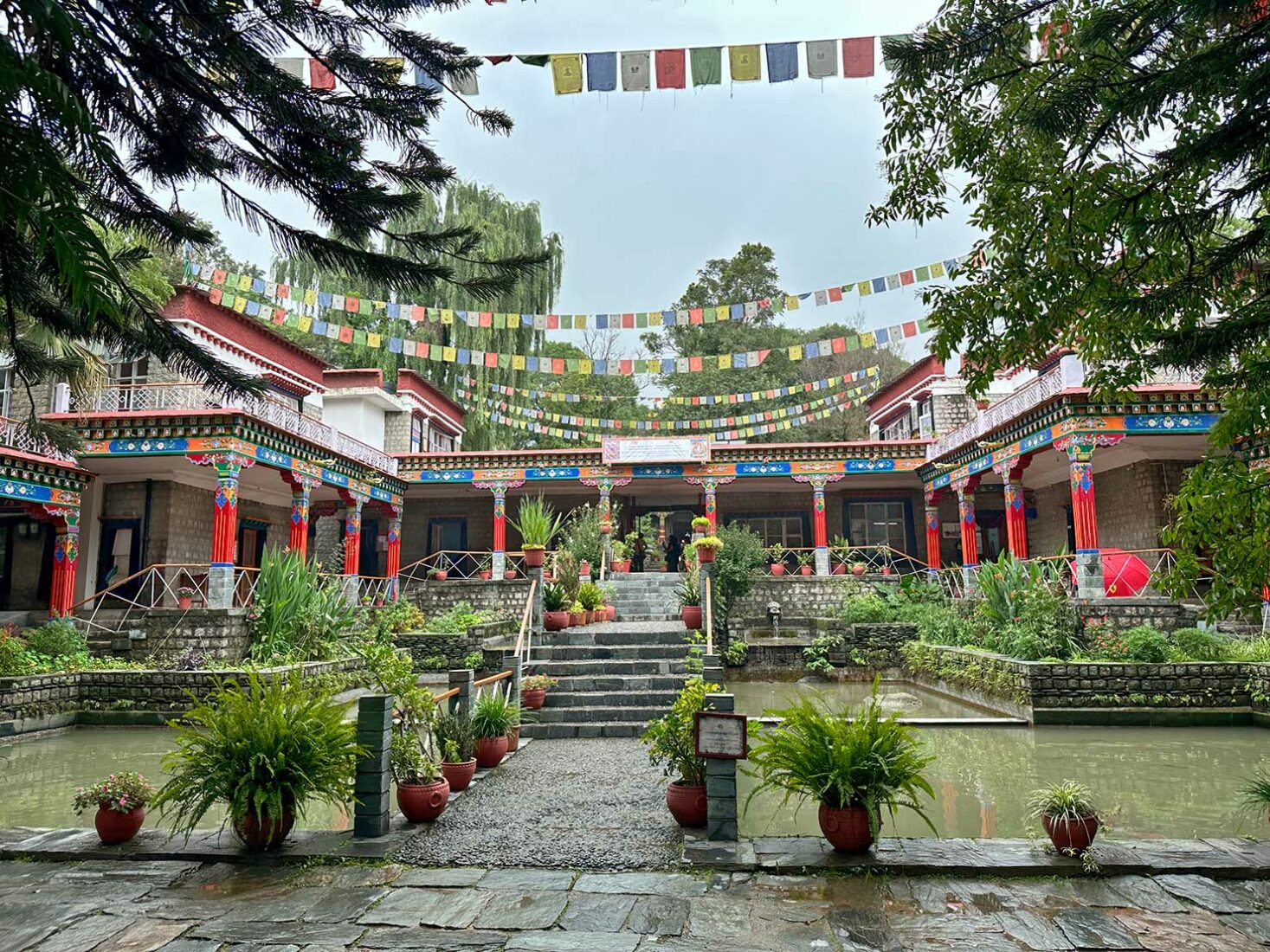
Norbulingka accomplishes this goal with workshops, where vetted Tibetan craftsmen pursue the arts of woodcarving and carpentry, wood painting, tailoring, Thangka painting, Thangka Appliqué, and metal statue making. I watched as artisans carved and painted wooden jewelry boxes, curio boxes, and wooden picture frames; and wove fabrics on looms that would become traditional clothing and wall hangings.

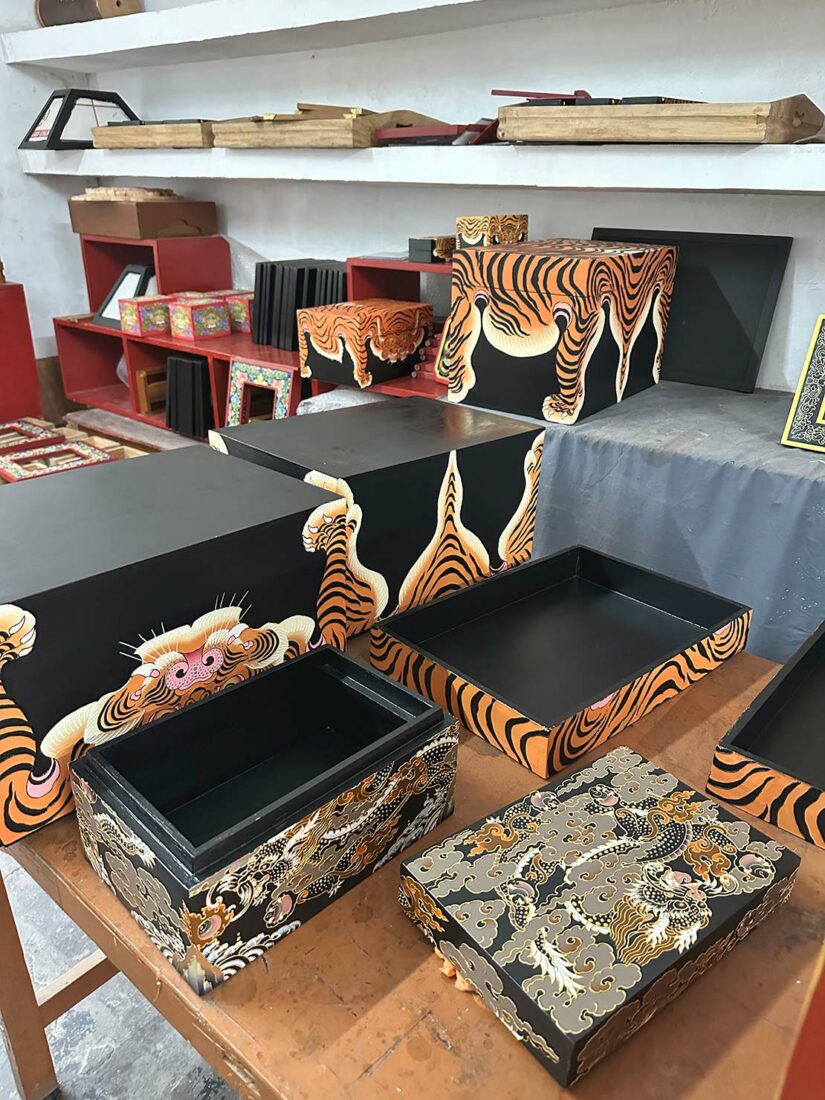
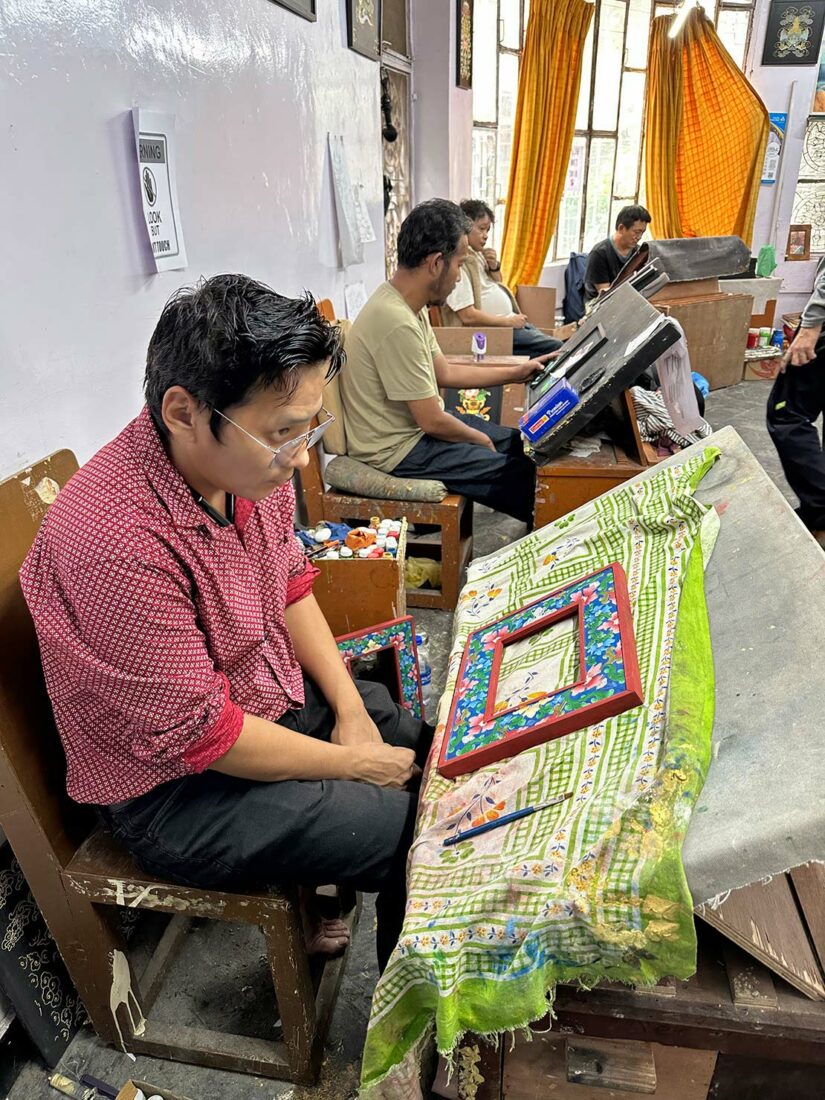
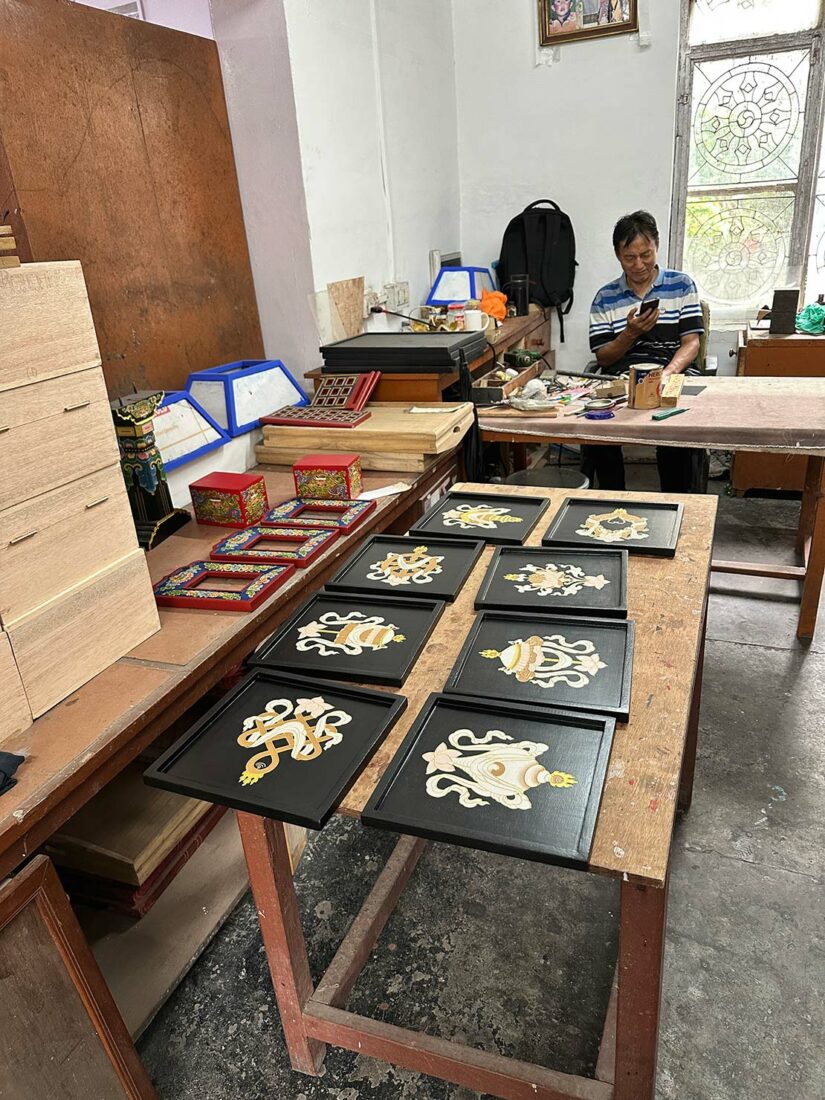
In addition to the workshops, the Losel Doll Museum is located at Norbulingka. Miniature dolls dressed in exquisite, authentic attire showcase Tibetan culture throughout history. I also stopped into Norbulingka’s Tibetan Craft Store, which sells the artwork created on site. The items on display were drop-dead gorgeous, with a price to match. I looked at a lacquered jewelry box but at $900 USD it was too pricey for me.
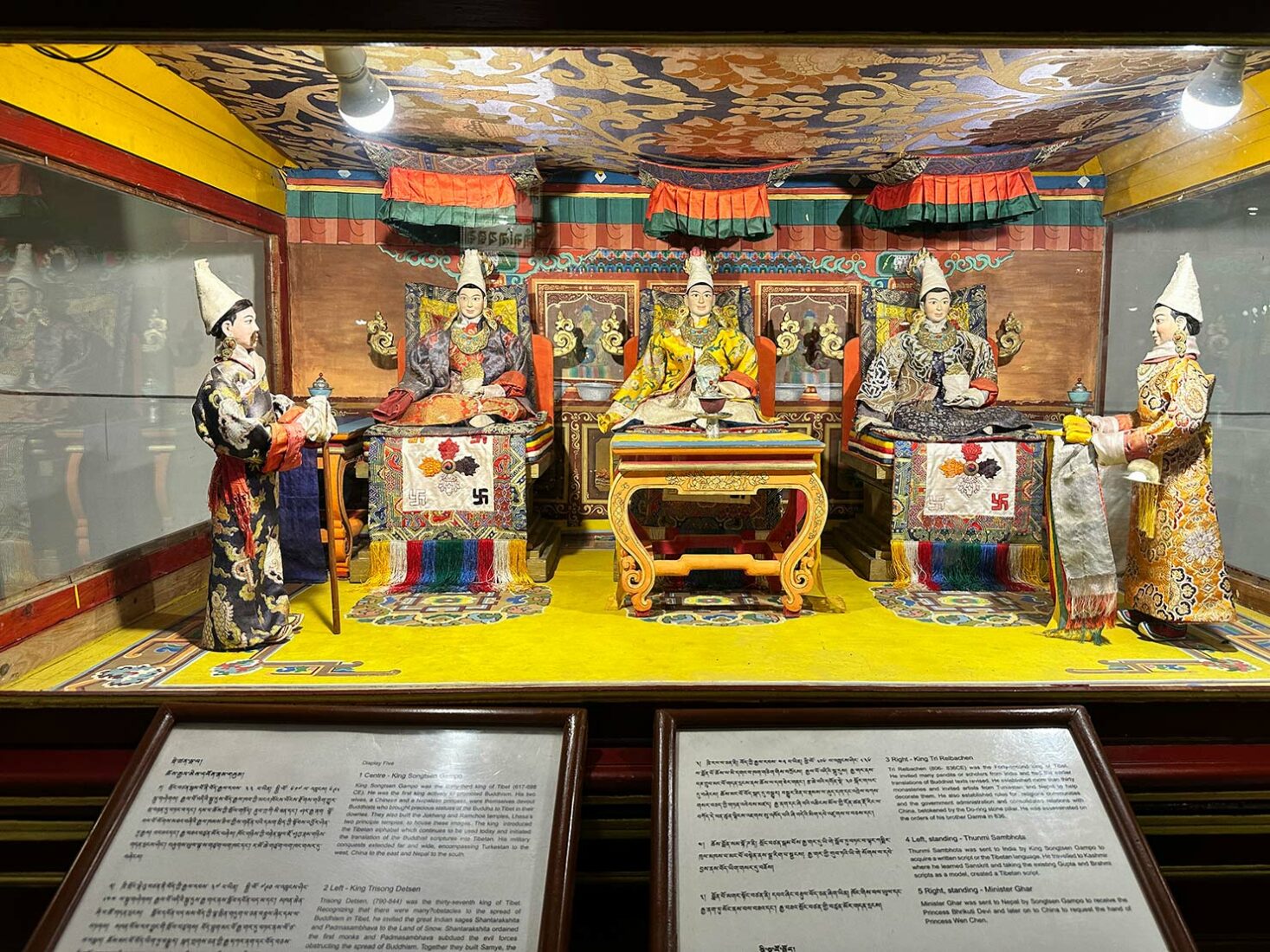
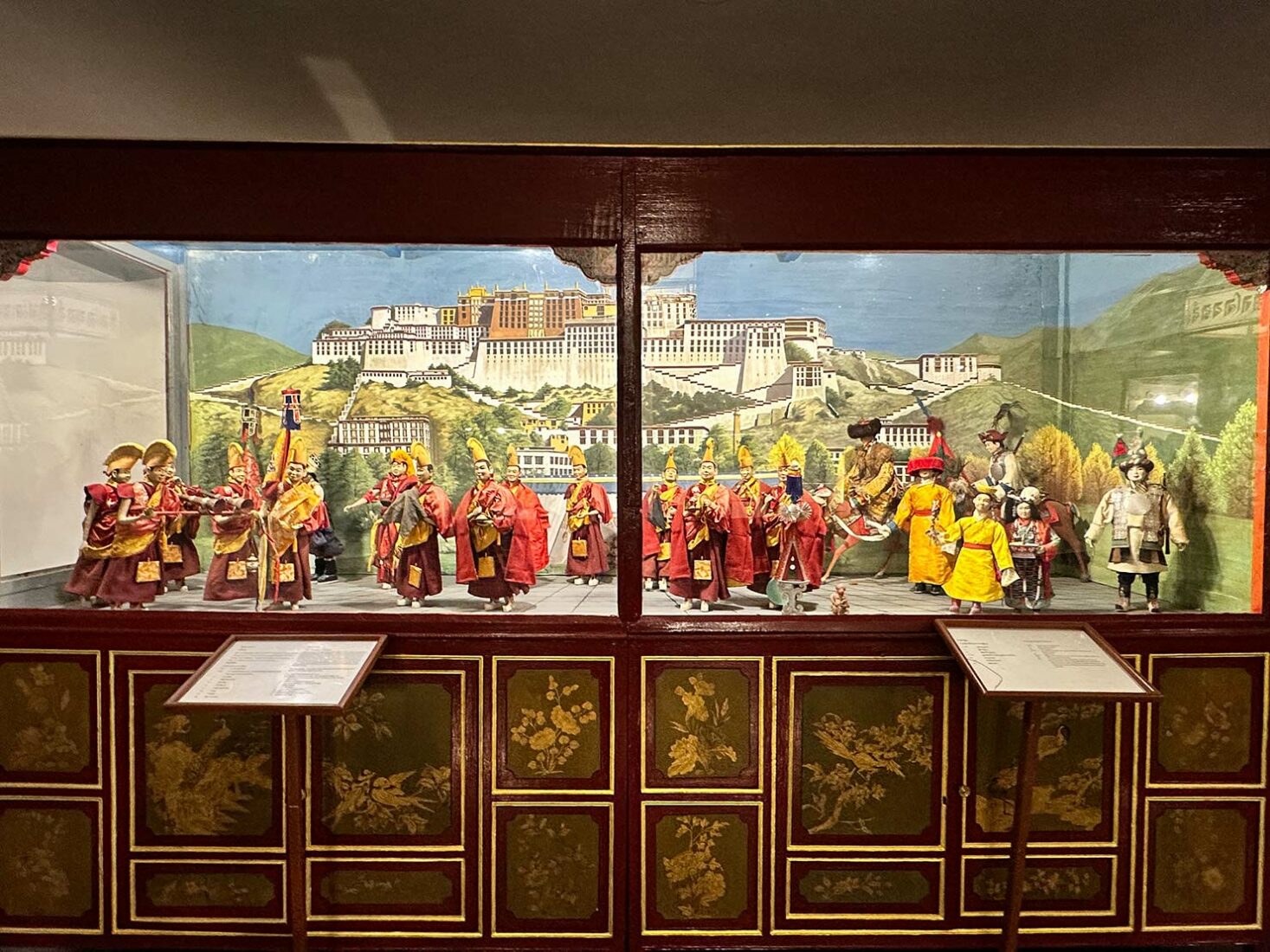
Finally, the jewel of Norbulingka appeared, Deden Tsuklagkhang Temple. With a name that means ‘the seat of happiness,’ this temple is the perfect place for prayer and reflection. A magnificent example of Tibetan religious architecture, it displays some of the finest work done by Norbulingka artists.
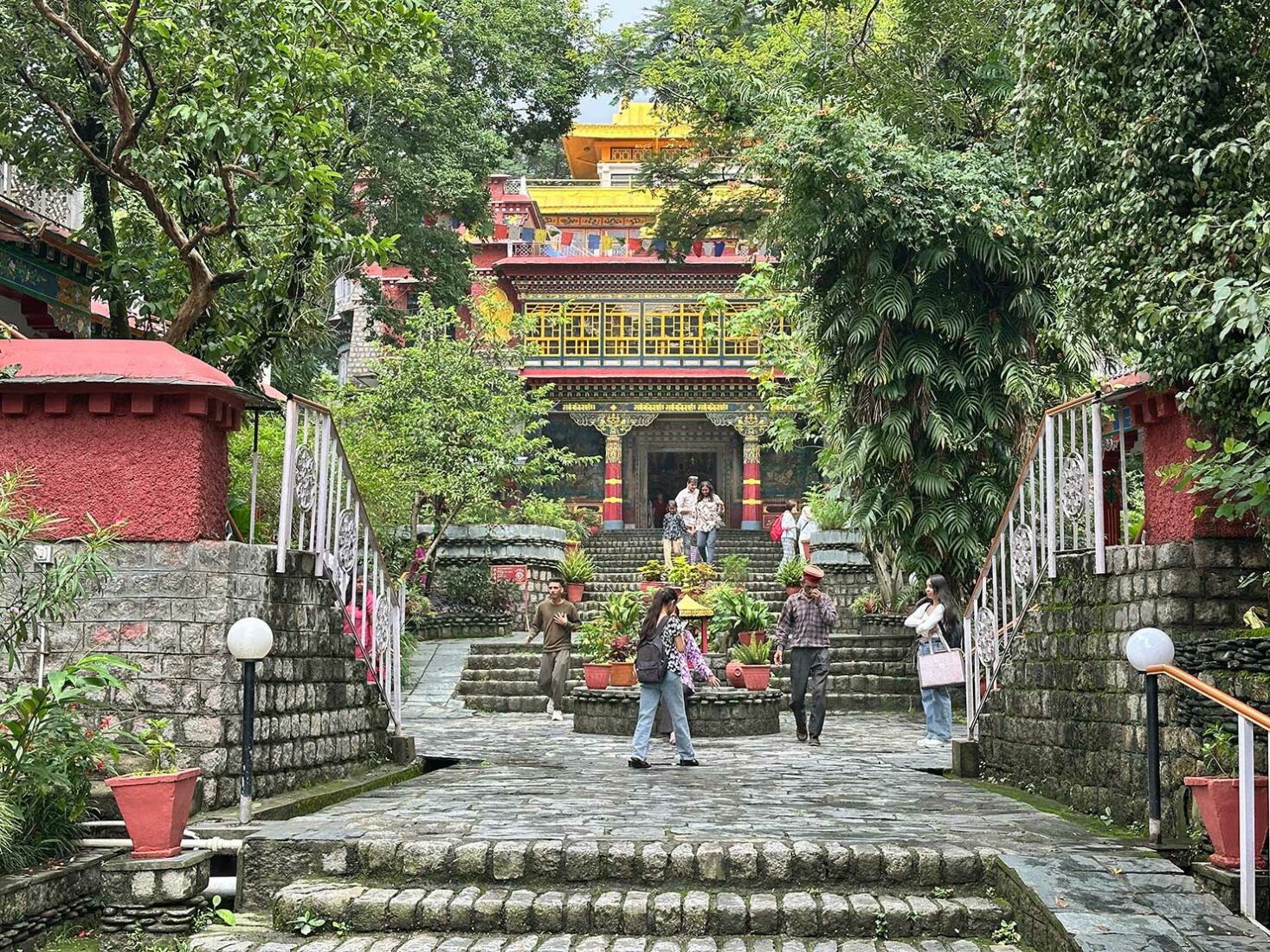
I was dazzled when I stepped inside. The prayer hall is dominated by a colossal 14-foot tall copper gilded statue of Buddha Shakyamuni. Hanging from the balcony is a 16-foot tall silk and brocade appliquéd depiction of the Sixteen Arhants. An extraordinary piece of craftsmanship, it took dozens of highly skilled artisans more than a year to assemble and sew together several thousand pieces of cut brocade to create the finished piece.

Arjun and I wandered back through the lush grounds, built around trees, boulders, ponds, and streams, following the natural contours of the land. We stopped at the Norbulingka’s Norling Restaurant for a delicious vegetarian lunch. Then, recharged, we hit the road again.
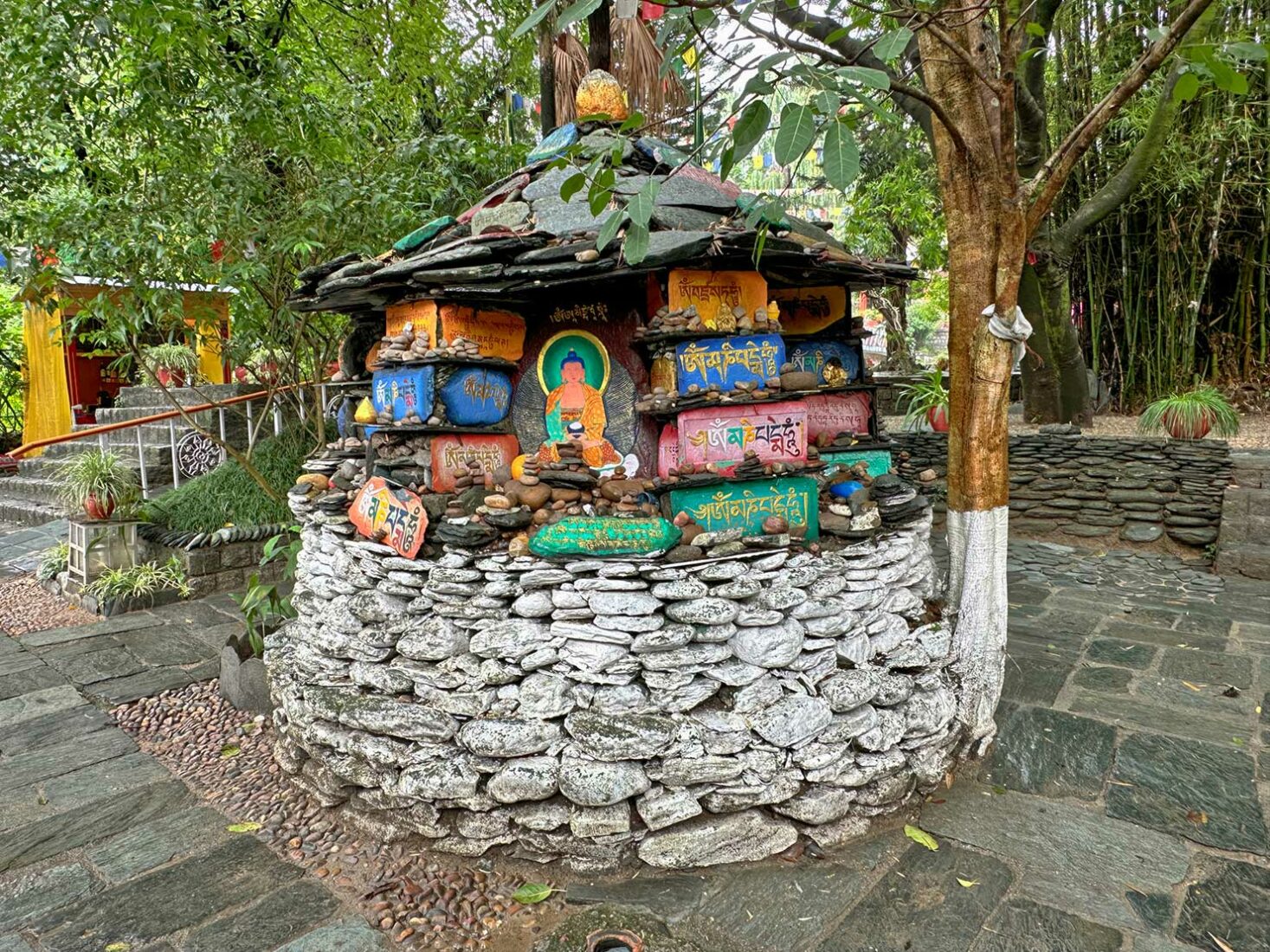
Our final stop of the day was Gyuto Tantric Monastery (GyutoDratsang). The original monastery was established in 1474 in Tibet, tasked with preserving and promoting the tradition of tantric teachings of the great teacher Tsongkhapa. When the Chinese invaded Tibet in 1959, 83 monks from the monastery fled to Dalhousie, India. After two more relocations in India, the monastery was moved to its final location near Dharamshala. The interior of the massive worship hall is stunning, with seating for more than a hundred monks. How I would love to attend a puja here. I can imagine the great hall reverberating with the blare of Tibetan trumpets, the crash of cymbals, the deep thrum of gongs, and the mesmerizing chants of monks reciting the sutras.
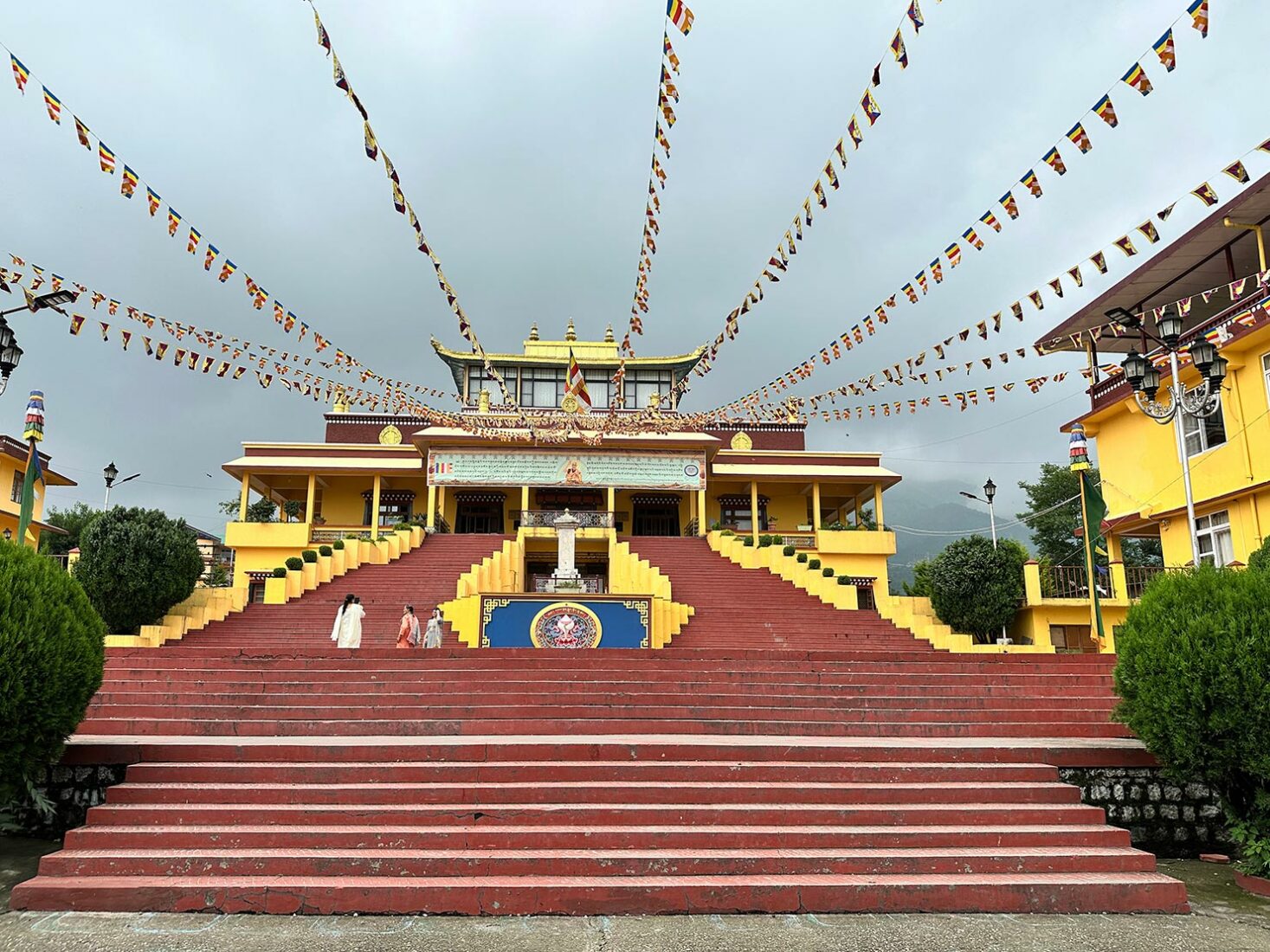
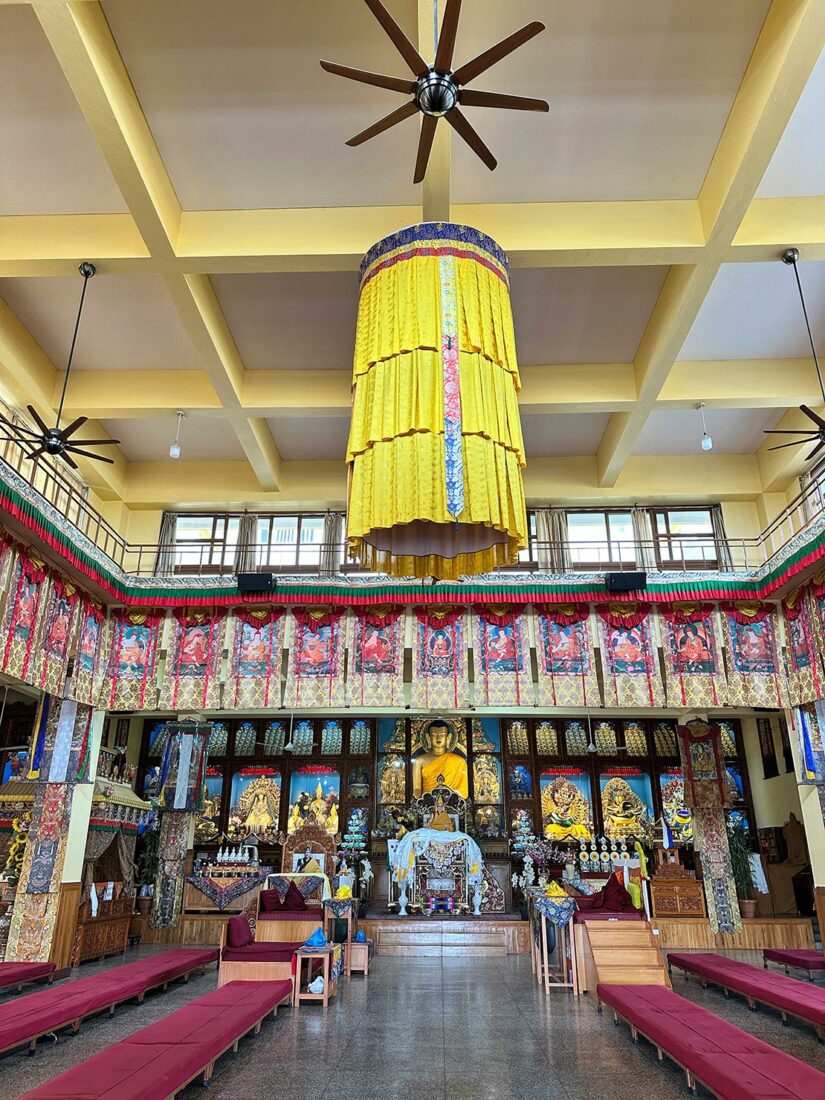
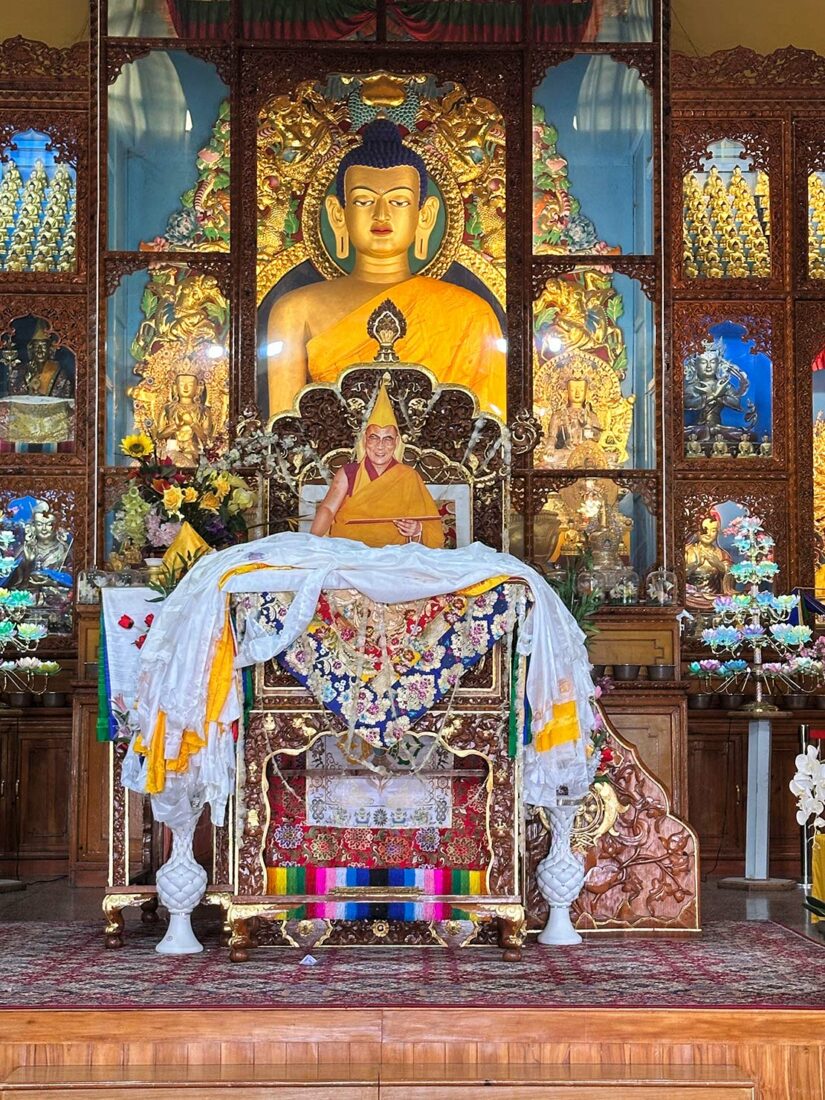
It was a long day, made even longer by the incessant blaring of car horns as we battled our way home through traffic jams on narrow mountain roads. I still don’t know how we made it back without hitting one of the pedestrians that walked in the middle of the street, oblivious to the vehicles that passed just inches from them.
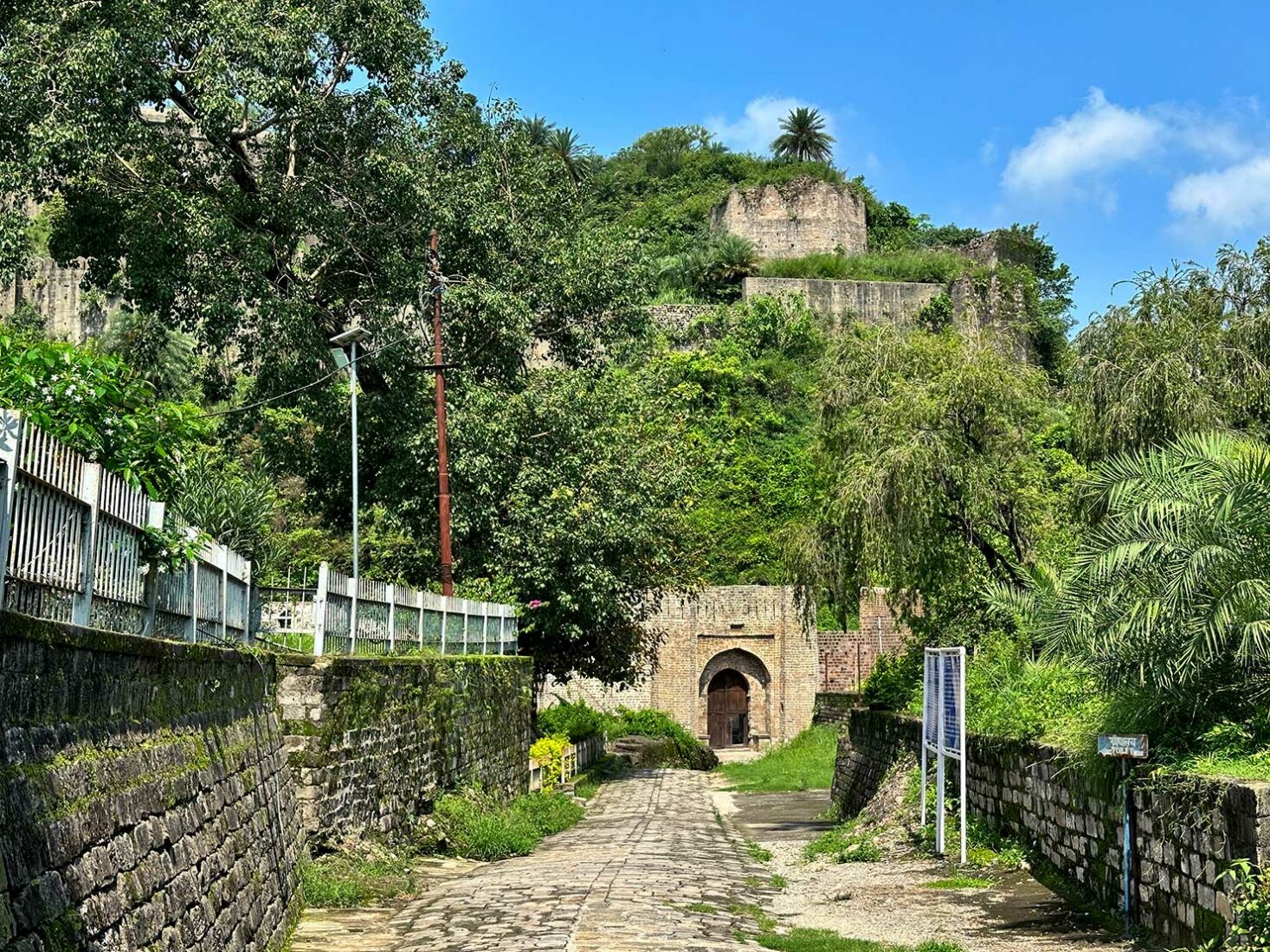
Two days later, Arjun picked me up for visits to two more historic sites, Kangra Fort and the Masroor Rock-Cut temple. Kangra Fort, more than a thousand years old, rises 300 feet above the river bed and features extensive fortification walls spanning approximately 2.4 miles. Its seven massive gates, strong ramparts, and watch towers guard a long narrow passage leading to the ruins of a once magnificent hilltop fort, temple, and palace complex. From the top of the promontory upon which it sits I was rewarded with a stunning view of sheer rock walls that plummet to the valley deep below, imprisoning the serpentine Khaner River.
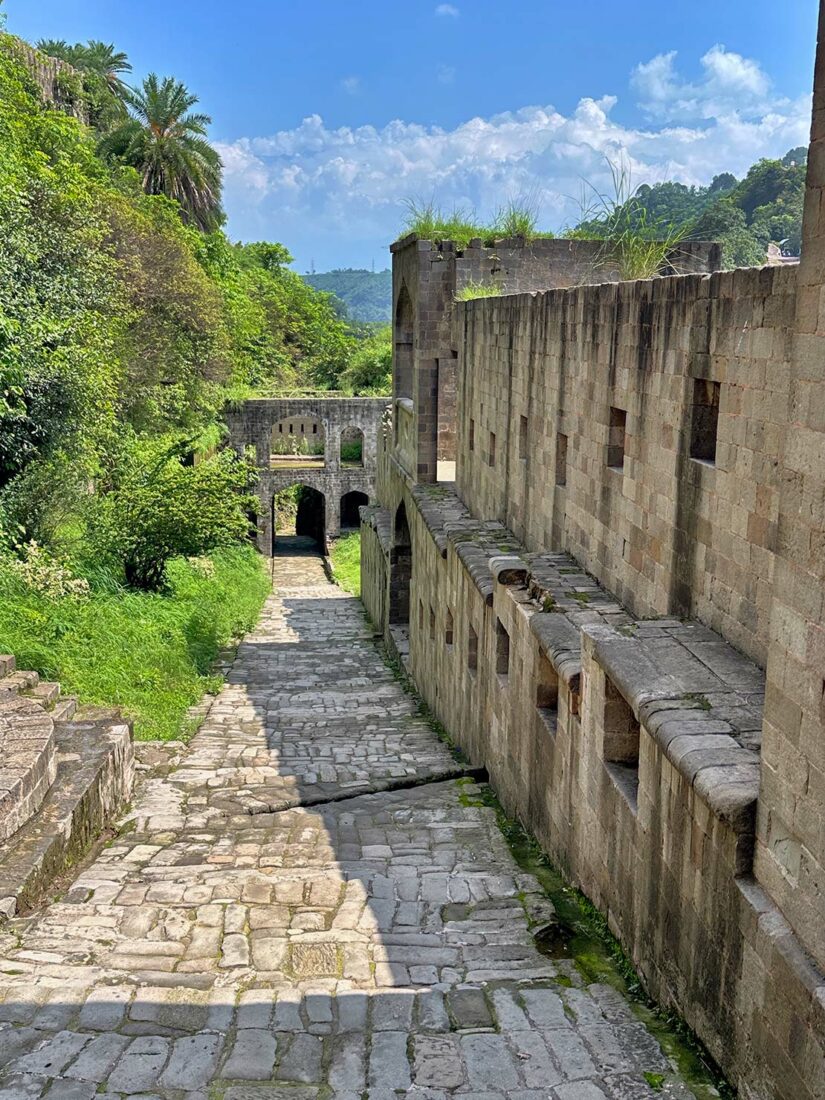


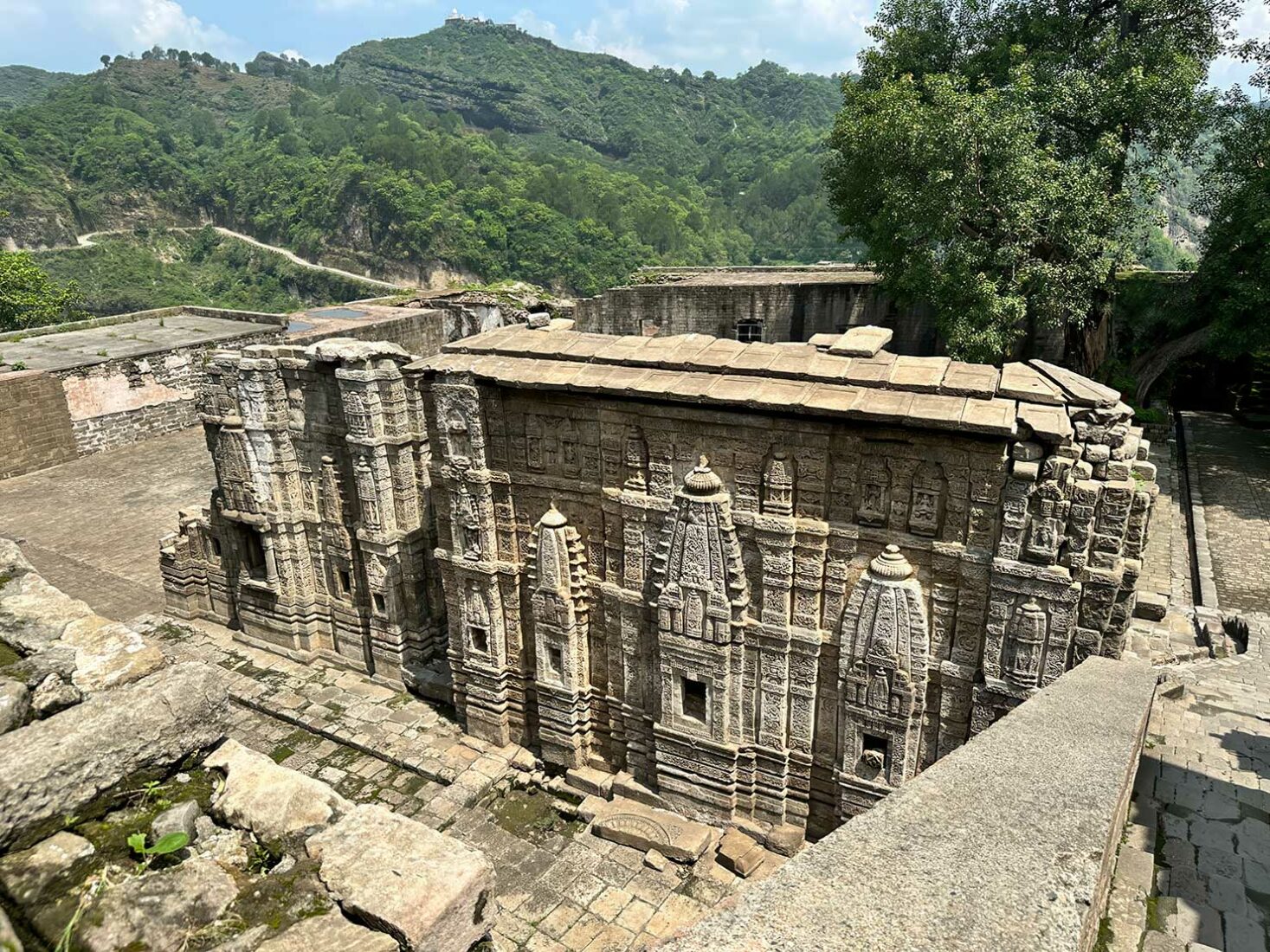
The fort’s impregnable defensive structure, once thought to be unassailable, has seen a tempestuous history. It was conquered by Mahmud of Ghazni in 1009, then seized in 1337 by the sultan of Delhi. In 1622, it came under the rule of the Muhammadan rulers and remained in their hands for more than 200 years. In the second half of the 18th-century the Mughal rule declined and Raja Sansar Chand Kotoch II succeeded in recapturing their ancestral fort. His ambition led him to come into conflict with several other hill states, including the Gurkhas, who finally captured the Kangra fort in 1809 and established Sikh rule. Following the first Anglo-Sikh Treaty, the Kangra fort passed into British control in 1846. Kangra fort was largely ruined by the devastating earthquake of April 4, 1905. It was declared a Protected Monument in 1909 and is now under the Archaeological Survey of India.
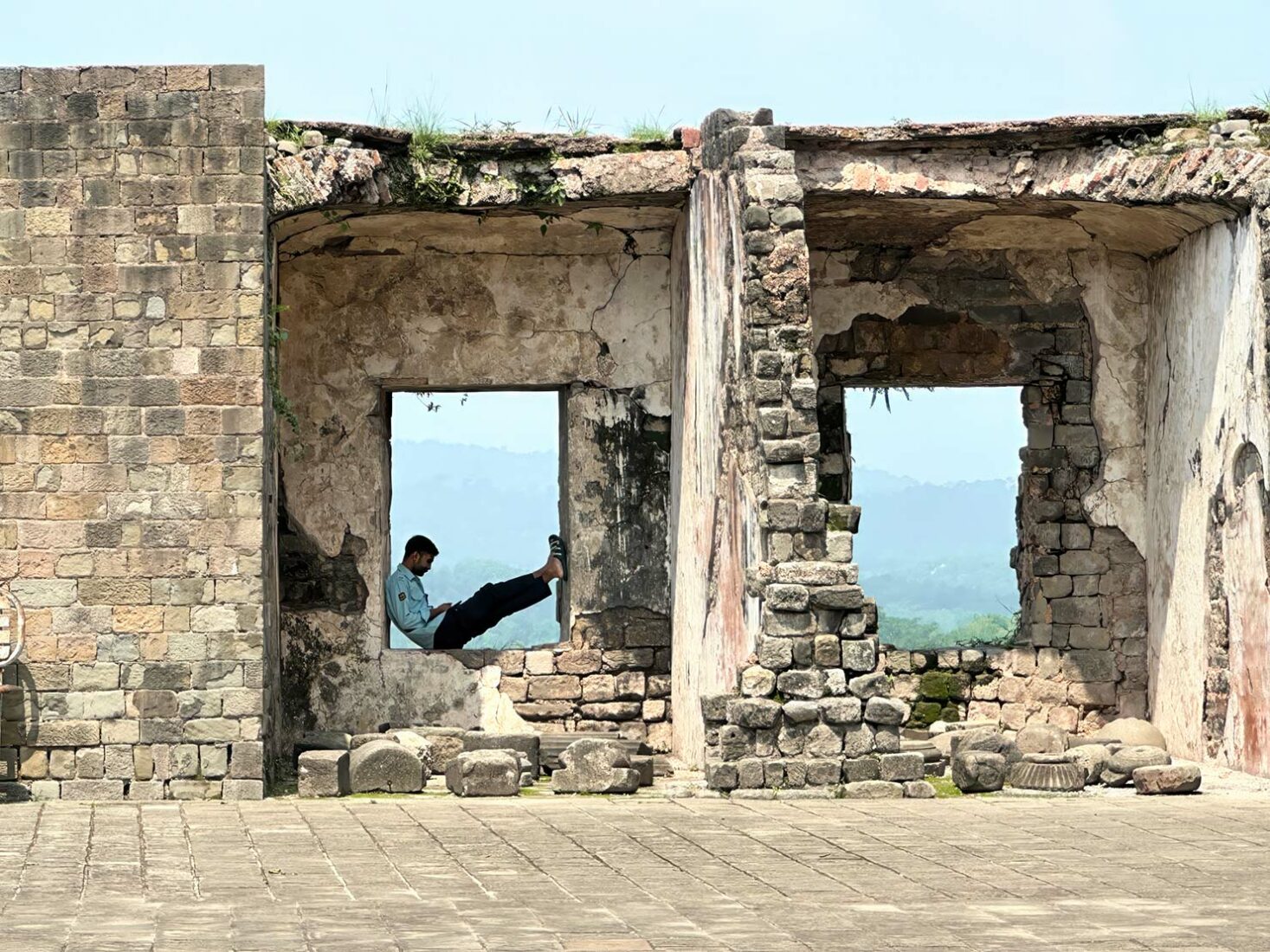
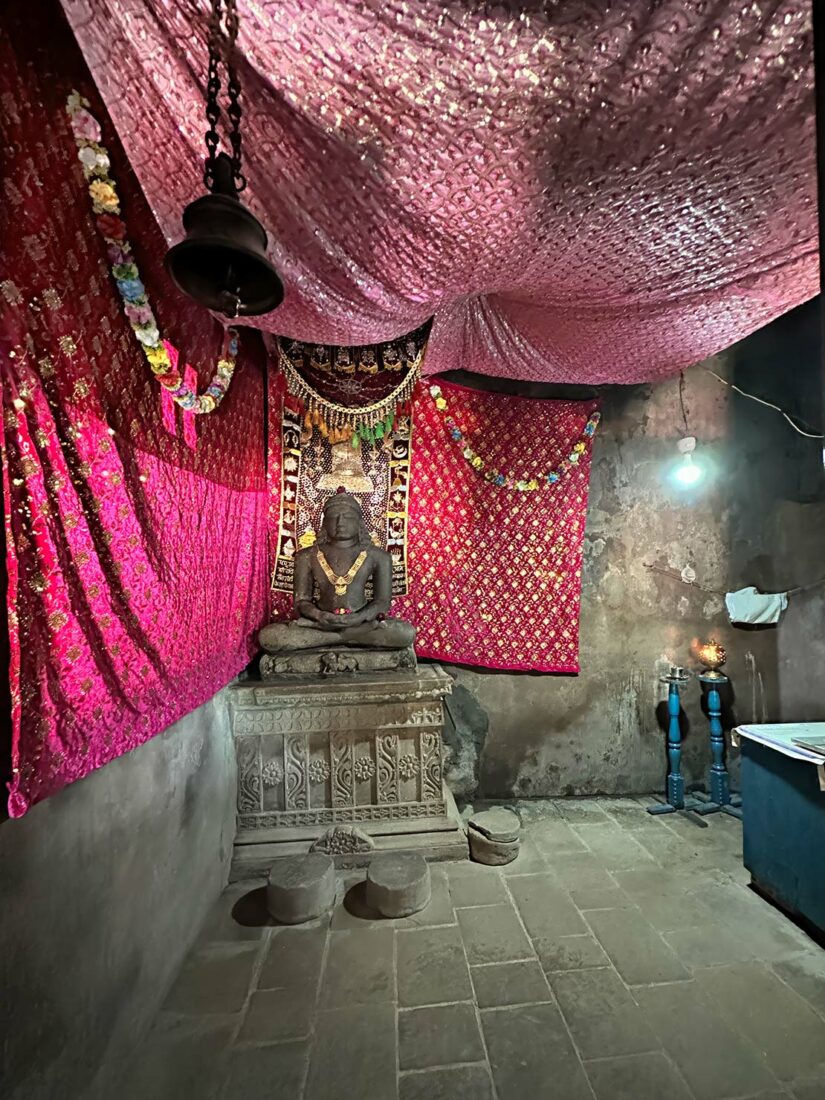
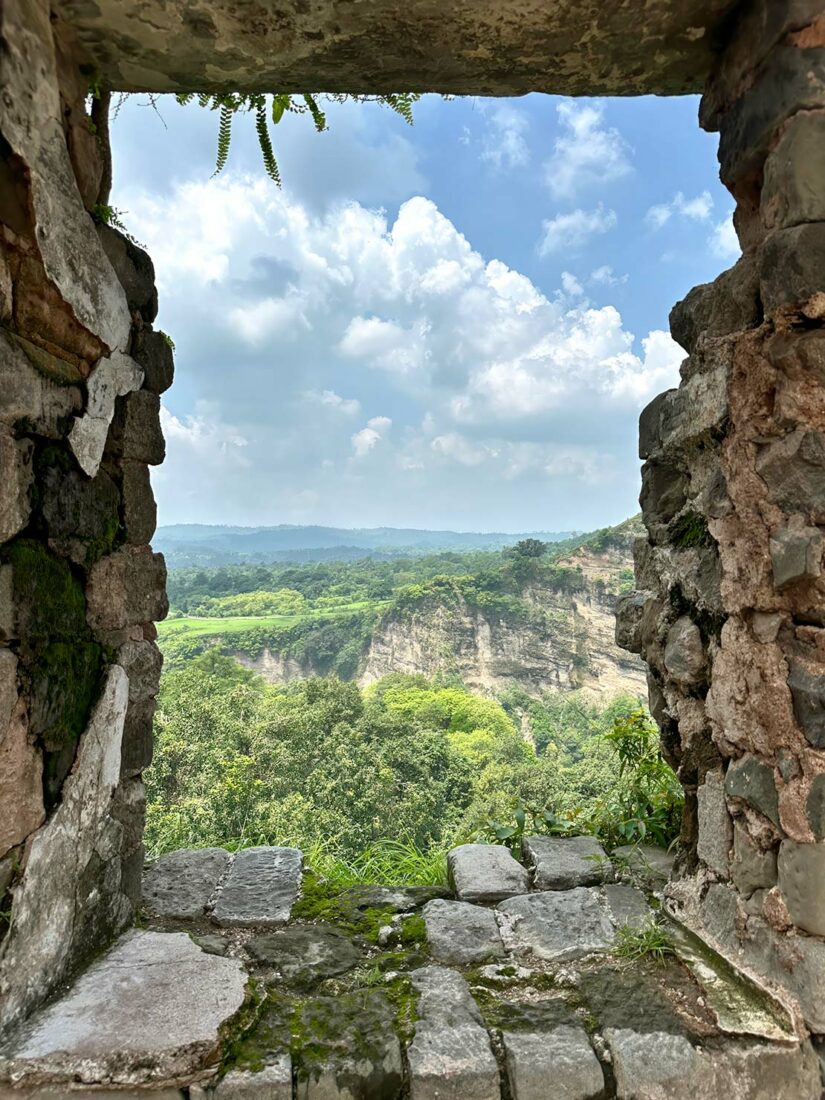
Our second and final stop of the day was Masroor Rock-Cut temple. This 8th century Hindu temple was carved in situ from the native sandstone. It faces a sacred pool on the east side. Unfortunately, the sandstone, a soft stone to begin with, has not held up well, and the Kanga earthquake of 1905 did even more damage. No effort has been made to repair the sculptures and many are lying on the ground in heaps of rubble. Still, it was worth seeing.
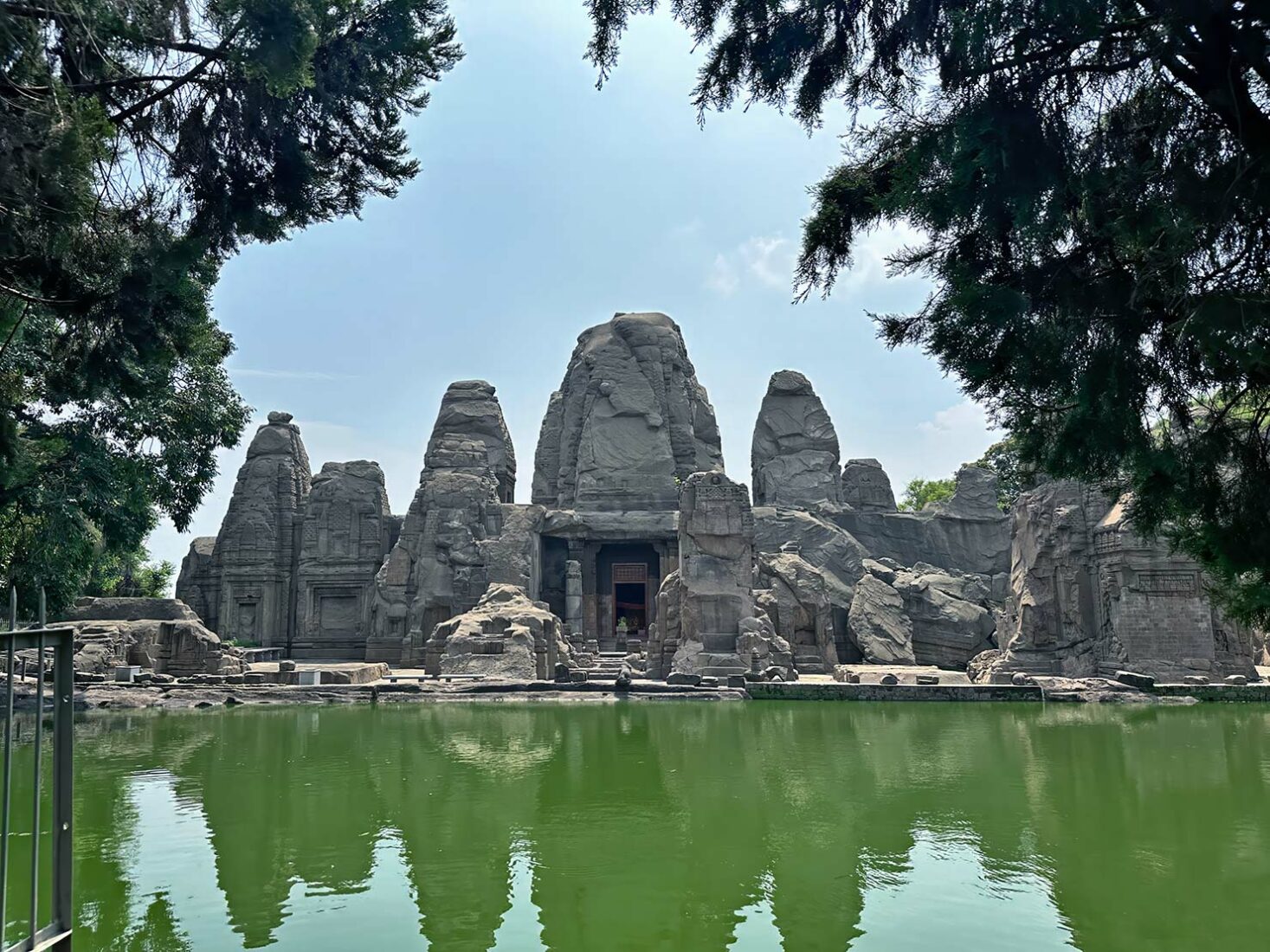
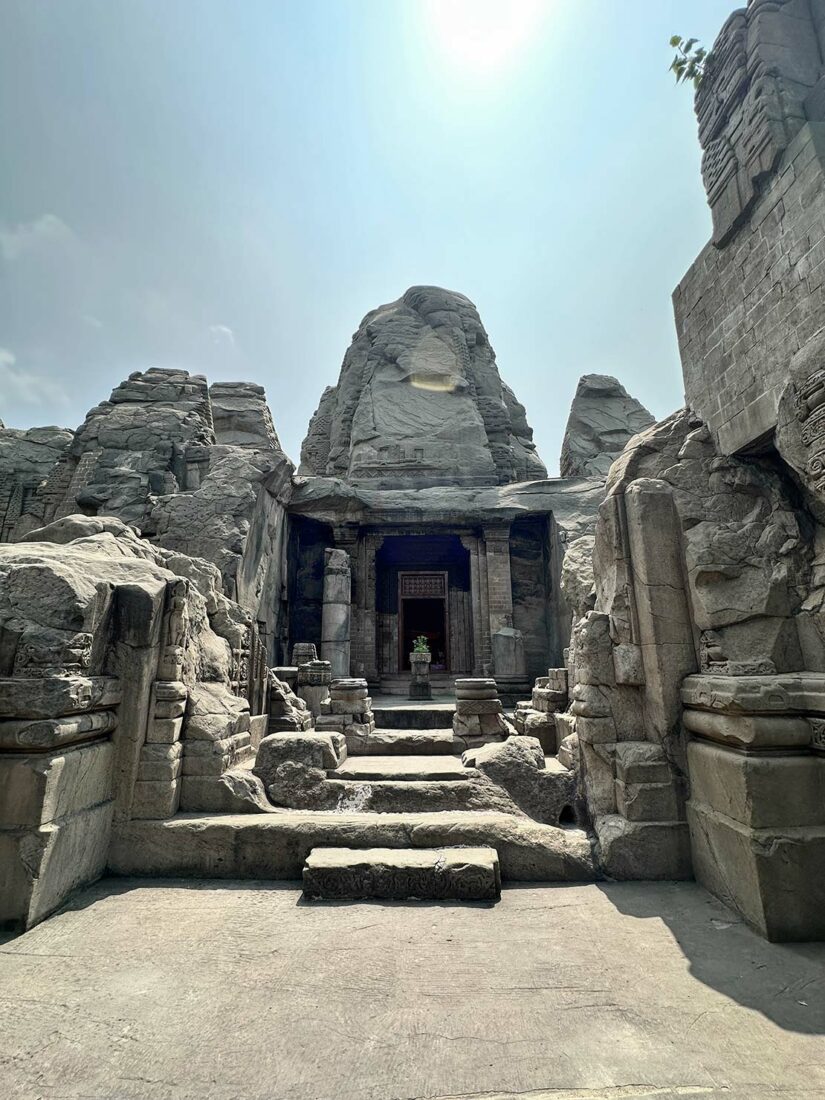
We had been extremely lucky with weather all day. The morning dawned clear and sunny, and the perfect weather remained until I finished my tour of Masroor\. Within moments of getting back in the car the rain came bucketing down. No worries. I went back to the hotel, ordered room service, and watched the monkeys glaring at me from the railing on my balcony. Like me, they had no desire to get drenched. No doubt they would have been delighted to ransack my room if only I had opened my sliding glass doors.

follow my instagram @heather_a_br
where is the drywall
i too love this country and by association this post
Really loved this post – it’s clear you’ve put a lot of thought and effort into it. I’ll definitely be following along for more updates.
Once I was in McLeod Ganj and the lepers came-Yes, I gave!
When I was in Chiang Rai, I went on a tea tour, like you describe, endless fields of green-and such flavors of tea! It’s a wonderful thing to do-especially on a rainy day-loved your brilliant photos that made me feel like I was there, rain, a slight chill in the monsoon air, hot tea!
I never knew about those amazing forts! How I wish I had and gone to see them.
Regarding whether to give or not to give, I never give to those who have been deliberately maimed in order to beg. However, if a person is playing a musical instrument or doing something entertaining, then I do give, because that is a perfectly reasonable way to earn a living, in my view.
I enjoyed this article very much.